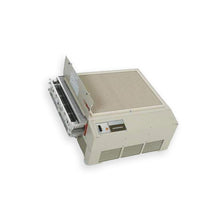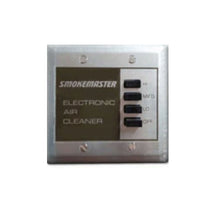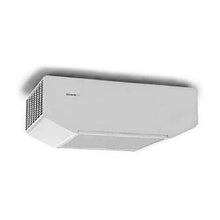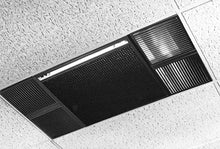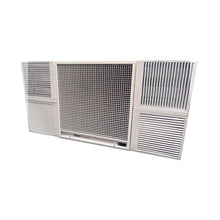Understanding Air Quality Sensors and Monitors for Commercial Buildings: What to Track
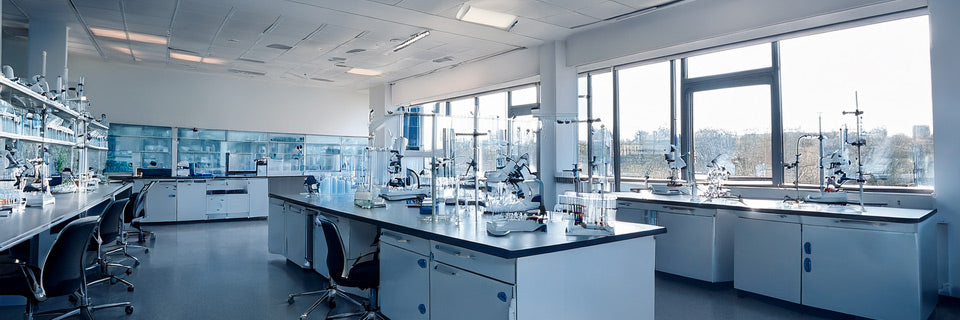
In today's commercial landscape, the air we breathe indoors is no longer an afterthought—it's a critical factor influencing everything from employee well-being and productivity to operational costs and regulatory compliance. As Commercial Air Purifiers, LLC, a company dedicated to bringing the best air purifiers to the market, we understand that creating healthy indoor environments starts with accurate, insightful data. This comprehensive guide will delve into the essential aspects of understanding and utilizing commercial air quality monitors, highlighting what to track and why it matters.
The Invisible Threat: Why Indoor Air Quality Demands Attention
Imagine a workforce grappling with persistent headaches, unexplained fatigue, or recurring respiratory issues. While often attributed to common ailments, these symptoms could be silent alarms signaling poor indoor air quality (IAQ). Unlike outdoor pollution, which is often visible as smog, indoor air contaminants are frequently invisible, odorless, and yet profoundly impactful.
Studies consistently highlight the detrimental effects of poor IAQ on occupants. For instance, the U.S. Environmental Protection Agency (EPA) and other research bodies have found that indoor pollutant levels can often be significantly higher than outdoor levels. This is particularly concerning given that most individuals spend up to 90% of their time indoors, with a substantial portion of that in office environments. The economic ramifications are staggering: the EPA estimates that poor indoor air can cost the nation tens of billions of dollars annually in lost productivity and increased medical expenses.
Beyond the immediate health concerns, compromised IAQ directly impacts business operations. A landmark study by Harvard University demonstrated a significant link between poorly ventilated environments with elevated CO2 levels and decreased cognitive function, concentration, and energy in employees. Furthermore, poor IAQ can lead to "Sick Building Syndrome" (SBS), a cluster of non-specific symptoms such as headaches, eye irritation, and fatigue that improve when individuals leave the building. This directly translates to increased absenteeism and reduced overall performance, impacting a company's bottom line and reputation.
The implications extend beyond the human element. Dust and debris, common airborne pollutants, can force HVAC systems to work harder, increasing energy consumption by up to 15%. This not only drives up utility costs but also accelerates wear and tear on expensive equipment, leading to higher maintenance and replacement expenses. In an era where health, sustainability, and productivity are paramount, the need for optimal indoor environments in commercial spaces has never been more critical. This is where the power of the commercial air quality monitor comes into play.
The Power of Data: What Commercial Air Quality Monitors Track
Commercial air quality monitors are sophisticated devices designed to measure various environmental parameters and pollutants, providing real-time data that empowers building managers to make informed decisions. These devices often employ a range of advanced technologies to detect and quantify harmful substances. Understanding what they track is the first step towards creating a healthier workspace.
1. PM2.5: The Invisible Invader
Perhaps one of the most critical metrics to monitor is Particulate Matter (PM), particularly PM2.5. These are microscopic particles with a diameter of less than 2.5 micrometers, roughly 30 times smaller than the average human hair. Due to their minute size, PM2.5 particles can easily bypass the body's natural defenses, penetrating deep into the lungs and even entering the bloodstream.
How PM2.5 Sensors Work: Most PM2.5 sensors utilize laser light scattering technology. A sensor emits a laser beam, and as PM2.5 particles pass through it, the light is scattered. The changes in scattered light are then measured, allowing the device to determine the concentration of particles in the air, typically expressed in micrograms per cubic meter (). Some advanced sensors may also use electrical or electrostatic detection methods.
Why it Matters for Commercial Buildings: PM2.5 can originate from various indoor and outdoor sources, including combustion (vehicle exhaust, cooking, tobacco smoke), dust, pollen, mold spores, and even certain building materials and office equipment. Elevated PM2.5 levels are linked to a range of health issues, from respiratory irritation and asthma attacks to more severe cardiovascular problems and reduced lung function. For office environments, high PM2.5 can contribute to symptoms of Sick Building Syndrome, diminishing employee comfort and concentration.
Commercial Air Purifiers, LLC Perspective: As experts in air purification, we emphasize that PM2.5 is a primary target for effective air filtration. High-efficiency particulate air (HEPA) filters, a core component of many commercial air purifiers, are specifically designed to capture 99.97% of airborne particles 0.3 micrometers in diameter, including PM2.5. Monitoring PM2.5 levels allows businesses to gauge the effectiveness of their existing filtration systems and determine when additional purification measures, like a high-grade commercial air purifier, are necessary.
2. CO2 Levels: A Proxy for Ventilation and Cognitive Performance
Carbon Dioxide (CO2) is a natural byproduct of human respiration. While not directly toxic at typical indoor concentrations, elevated CO2 levels are a strong indicator of inadequate ventilation and a lack of fresh air exchange.
How CO2 Monitors Work: The most common and accurate type of CO2 monitor for indoor use is a Non-Dispersive Infrared (NDIR) sensor. NDIR sensors work by shining an infrared light through a sample of air. CO2 molecules absorb specific wavelengths of infrared light. By measuring the amount of light absorbed, the sensor can determine the concentration of CO2 in the air, expressed in parts per million (ppm).
Why it Matters for Workplaces: People exhale CO2 continuously, and in enclosed spaces with insufficient fresh air intake, CO2 levels can quickly climb. High CO2 concentrations can lead to symptoms like drowsiness, fatigue, headaches, and difficulty concentrating. Research, such as that by Harvard University, has specifically linked elevated CO2 levels to decreased cognitive function and reduced productivity. The recommended indoor CO2 levels generally fall below 1,000 ppm, with some guidelines suggesting aiming for closer to 800 ppm for optimal cognitive performance. Exceeding 1,100 ppm is generally considered an indicator of poor ventilation.
Commercial Air Purifiers, LLC Perspective: Monitoring CO2 levels is crucial for optimizing ventilation strategies. When CO2 levels rise, it signals the need for increased outdoor air intake, which can be achieved through improved HVAC system operation or, in some cases, by simply opening windows (when outdoor air quality allows). While air purifiers do not directly remove CO2, they play a complementary role by removing other pollutants that accumulate in poorly ventilated spaces. Integrating CO2 monitoring with smart HVAC systems can lead to energy savings by adjusting airflow based on real-time CO2 readings, ensuring fresh air without over-ventilating.
3. Volatile Organic Compounds (VOCs): The Chemical Cocktail
Volatile Organic Compounds (VOCs) are a diverse group of chemicals that can become gaseous at room temperature. They are emitted from a wide array of sources commonly found in commercial buildings.
How VOC Sensors Work: VOC sensors often use technologies like Photoionization Detectors (PIDs) or Metal Oxide Semiconductor (MOS) sensors. PIDs use ultraviolet light to ionize VOC molecules, and the resulting current is measured to determine the concentration. MOS sensors detect changes in electrical resistance when VOCs react with a heated metal oxide surface.
Why it Matters for Commercial Buildings: Common indoor sources of VOCs include cleaning products, paints, adhesives, new furniture, carpeting, office equipment (like printers), and even personal care products. Exposure to VOCs can cause eye, nose, and throat irritation, headaches, nausea, and can contribute to more serious long-term health effects, including liver and kidney damage, and certain cancers, depending on the specific compound and exposure levels. For example, formaldehyde, a common VOC, should ideally remain below 27 parts per billion (ppb) over an 8-hour average.
Commercial Air Purifiers, LLC Perspective: Addressing VOCs often requires a multi-pronged approach. Source control—selecting low-VOC materials and cleaning products—is paramount. However, for ongoing emissions, advanced air purification systems employing activated carbon filters are highly effective at adsorbing and removing a broad spectrum of gaseous pollutants, including VOCs. Real-time VOC monitoring helps identify problem areas and allows for targeted interventions.
Other Important Parameters to Track:
While PM2.5, CO2, and VOCs are often prioritized, comprehensive commercial air quality monitoring solutions may also track:
-
Temperature and Humidity: These are crucial for occupant comfort and can also influence the concentration and behavior of other pollutants. For instance, high humidity can promote mold growth. The EPA suggests maintaining relative humidity between 30% and 50% for optimal comfort and mold prevention, while OSHA recommends 20%-60%.
-
Carbon Monoxide (CO): A highly toxic, odorless, and colorless gas, typically associated with combustion sources like faulty furnaces or vehicle exhaust. OSHA sets a permissible exposure level for CO at 50 ppm averaged over an 8-hour shift.
-
Radon: A naturally occurring radioactive gas that can seep into buildings from the soil. Long-term exposure to high levels of radon significantly increases the risk of lung cancer. While it varies by state, the EPA recommends taking action when radon levels exceed 4 pCi/L.
-
Ozone (O3): While beneficial in the upper atmosphere, ground-level ozone is a respiratory irritant. Some office equipment, like older laser printers, can produce ozone.
Implementing a Commercial Air Quality Monitoring Strategy
Effective air quality management is an ongoing process that benefits immensely from a strategic monitoring approach.
Choosing the Right Monitor: When selecting a commercial air quality monitor, consider the following:
-
Measured Parameters: Does it track the specific pollutants most relevant to your building's activities and potential sources?
-
Accuracy and Calibration: Ensure the sensors provide reliable and accurate data. Regular calibration is essential for maintaining accuracy.
-
Connectivity and Data Reporting: Look for monitors that offer real-time data access, cloud-based platforms for historical data analysis, and customizable alerts. This allows for proactive management and trend identification.
-
Scalability: Can the system be expanded to cover multiple zones or an entire building? Networked IAQ systems with centralized control are ideal for larger commercial spaces.
-
Placement: Sensors should be strategically placed at "breathing height" and away from immediate pollutant sources (like vents or heavily trafficked doorways) to get representative readings. For larger areas, multiple sensors may be necessary.
Integrating Monitoring with Actionable Insights:
The data gathered from commercial air quality monitors is only valuable if it leads to informed action. Here's how it can be integrated:
-
Baseline Assessment: Establish initial baseline readings to understand your building's current IAQ profile.
-
Identify Problem Areas: High readings for specific pollutants can pinpoint areas requiring immediate attention, whether it's a poorly ventilated conference room or an area with new furniture off-gassing.
-
Optimize Ventilation: Use CO2 data to inform and adjust HVAC system settings, ensuring adequate fresh air exchange without excessive energy consumption.
-
Implement Source Control: If certain VOCs are consistently high, identify their sources and consider replacing materials or products with low-emission alternatives.
-
Targeted Air Purification: When monitoring indicates persistent pollutant levels (especially PM2.5 or VOCs) that cannot be fully addressed by ventilation or source control, strategically deploy commercial air purifiers. For example, in areas with high foot traffic or where airborne contaminants are a concern, a robust air purification system can provide continuous air cleaning.
Case Study in Action (Hypothetical):
Consider a marketing agency in a bustling city center. Employees frequently reported afternoon drowsiness and headaches. A commercial air quality monitor was installed, revealing consistently elevated CO2 levels (often exceeding 1,200 ppm) in the open-plan office, particularly during peak occupancy. The facilities manager, leveraging this data, adjusted the HVAC system's fresh air intake settings and scheduled additional air changes during business hours. Within weeks, CO2 levels normalized, and employees reported a noticeable improvement in alertness and a decrease in headaches. The data provided clear evidence of the problem and the effectiveness of the solution.
Solutions and Recommendations: Beyond Monitoring to Mitigation
Monitoring is the first crucial step, but it must be followed by effective mitigation strategies. As Commercial Air Purifiers, LLC, we advocate for a holistic approach to IAQ management that combines source control, optimized ventilation, and advanced air purification.
-
Source Control is Foundational: The most effective way to improve IAQ is to eliminate or reduce pollutant sources at their origin. This includes:
-
Material Selection: Opting for low-VOC paints, adhesives, furniture, and flooring during renovations or new constructions.
-
Cleaning Protocols: Using green cleaning products and ensuring proper ventilation during and after cleaning.
-
Maintenance: Regularly maintaining HVAC systems, including duct cleaning and filter replacement, to prevent the buildup and circulation of dust, mold, and bacteria.
-
Policy: Implementing strict no-smoking policies within and near building entrances.
-
-
Optimized Ventilation: Ensuring adequate fresh air circulation is paramount.
-
HVAC System Optimization: Work with HVAC professionals to ensure your system is properly designed, maintained, and operated to provide sufficient outdoor air exchange rates for your occupancy levels. Consider demand-controlled ventilation systems that use CO2 sensors to automatically adjust ventilation based on real-time occupancy.
-
Natural Ventilation: Where feasible and outdoor air quality is good, supplementing mechanical ventilation by opening windows and doors can be beneficial.
-
-
Advanced Air Purification Systems: For persistent airborne contaminants that ventilation alone cannot adequately address, commercial air purifiers offer a powerful solution.
-
Targeting Particulate Matter (PM2.5): Commercial air purifiers equipped with HEPA filters are essential for capturing microscopic particles like dust, pollen, mold spores, bacteria, and viruses. These systems are invaluable in offices to reduce allergens and airborne pathogens, creating a healthier environment.
-
Addressing Gaseous Pollutants (VOCs, Odors): For VOCs, chemical fumes, and unpleasant odors, air purifiers featuring robust activated carbon filters are critical. Activated carbon's porous structure effectively adsorbs gaseous pollutants, preventing them from recirculating in the indoor environment.
-
Whole-Building vs. Portable Units: For large commercial spaces, centralized air purification systems can treat air throughout the building. However, portable or zone-specific units can be highly effective for targeted improvement in high-traffic areas, meeting rooms, or spaces with specific pollutant sources. We recommend evaluating your specific needs and consulting with air purification specialists to determine the optimal solution.
-
By combining the insights gained from commercial air quality monitors with strategic implementation of source control, ventilation improvements, and advanced air purification technologies, businesses can transform their indoor environments. This proactive approach not only mitigates health risks but also cultivates a more comfortable, productive, and ultimately, more valuable workspace.
Conclusion: Investing in the Air We Breathe
The quality of the air within our commercial buildings is no longer a hidden variable; it's a measurable, manageable asset. By embracing the power of commercial air quality monitors, especially those tracking critical parameters like PM2.5 and CO2 levels, workplaces can gain unprecedented insight into their indoor environments. This data, coupled with understanding the impact of VOCs, empowers businesses to move beyond reactive problem-solving to proactive health and performance optimization.
At Commercial Air Purifiers, LLC, we firmly believe that investing in superior indoor air quality is an investment in human capital—your employees, tenants, and visitors. It translates into reduced sick days, enhanced cognitive function, improved morale, and ultimately, a more productive and resilient organization. The journey to healthier indoor air begins with knowledge, and comprehensive monitoring provides the roadmap. Take the next step: assess your current indoor air quality, understand the pollutants you need to track, and explore how integrated solutions, including cutting-edge commercial air purifiers, can transform your commercial space into a beacon of health and well-being.
Frequently Asked Questions (FAQs)
Q1: How often should I monitor air quality in my commercial building?
A1: Continuous monitoring is ideal for real-time insights and trend analysis. However, for many commercial buildings, regular spot checks or scheduled continuous monitoring during peak occupancy hours can be sufficient. The frequency depends on the building's usage, occupant density, and known potential pollutant sources. For critical areas or during renovation, more frequent or continuous monitoring is highly recommended.
Q2: Are there any specific indoor air quality standards for commercial buildings?
A2: While the Occupational Safety and Health Administration (OSHA) doesn't have specific IAQ standards, it requires employers to provide a workplace free from known hazards. Organizations like the American Society of Heating, Refrigerating and Air-Conditioning Engineers (ASHRAE) provide guidelines for ventilation rates and acceptable pollutant levels. The EPA also offers guidance on permissible exposure levels for various pollutants, such as PM2.5 and radon. It's crucial to stay updated on local regulations and industry best practices.
Q3: Can simply opening windows improve commercial air quality?
A3: Opening windows can introduce fresh outdoor air and dilute indoor pollutants, which can be beneficial, especially for CO2 levels. However, its effectiveness depends on outdoor air quality (e.g., presence of smog, pollen, or high PM2.5) and weather conditions. It also may not be a reliable solution for consistent ventilation in all commercial settings and won't filter out airborne particles.
Q4: Do air purifiers help with CO2 levels?
A4: No, standard air purifiers, including those with HEPA or activated carbon filters, are designed to remove particulate matter, VOCs, and odors. They do not remove carbon dioxide (CO2). Improving CO2 levels requires increased ventilation, meaning bringing in more fresh outdoor air. Air purifiers complement ventilation by cleaning the air that is recirculated or introduced.
Q5: What is Sick Building Syndrome (SBS) and how does monitoring help?
A5: Sick Building Syndrome (SBS) refers to situations in which building occupants experience acute health and comfort effects that appear to be linked to time spent in a building, but no specific illness or cause can be identified. Symptoms often include headaches, fatigue, dizziness, nausea, and eye, nose, or throat irritation. Air quality monitoring helps identify potential culprits like high CO2, VOCs, or particulate matter that contribute to SBS symptoms, allowing for targeted remediation.
Sources and Further Reading:
-
U.S. Environmental Protection Agency (EPA): An Office Building Occupant's Guide to Indoor Air Quality. https://www.epa.gov/indoor-air-quality-iaq/office-building-occupants-guide-indoor-air-quality
-
Harvard University T.H. Chan School of Public Health: Research on the impact of indoor air quality on cognitive function (Healthy Buildings Program). (While a specific direct link to a single study is not consistently provided across searches, the impact of Harvard's research on cognitive function and CO2 is widely referenced in numerous articles, such as those from COIT and Axis Newsroom. For more in-depth exploration, searching "Harvard indoor air quality cognitive function" will yield relevant publications.)
-
Occupational Safety and Health Administration (OSHA): Indoor Air Quality - Overview. https://www.osha.gov/indoor-air-quality
-
Mansor, A.A., et al. "Indoor Air Quality and Sick Building Syndrome Symptoms in Administrative Office at Public University." Dialogues in Health, 2024. (Referenced by MEJMMS blog on February 7, 2025, detailing the impact of IAQ on health and productivity)
-
Tektelic: 5 Main Reasons to Monitor CO2 Levels Indoors. https://tektelic.com/expertise/reason-to-monitor-co2-levels/
Author: Commercial Air Purifiers, LLC
Publication Date: July 25, 2025


